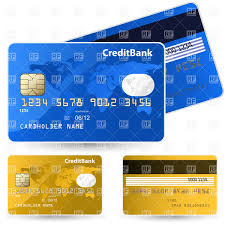
Here is an excerpt from my book, Retailer’s Guide to Merchant Services. The numbers after the words indicate where I have placed a footnote in the original copy.
“New and Loyal Customers
The ones who pay in cash now, will probably continue
paying in cash. But now, you will gain new customers
who prefer to pay in credit card. Most customers
prefer4 to have a choice in payment methods and studies
have shown that you will retain your customers when
they have a choice. Safe Transactions for the Customer
Credit card terminals also accept debit cards which are a
safer transaction for the consumer. Debit cards require
the use of a PIN number which only the owner of the
debit card has. In order to use the debit card, the owner
must enter his PIN number into the machine.
The business owner incurs a charge for the debit card
which is below the rate for the lowest priced credit card,
the qualified VISA or Master Card. The savings in
processing debit cards is around sixty percent. This
means that the fee to process debit cards is about sixty
percent lower than the qualified rate.
In order to process the debit cards, the owner must
purchase a PIN pad in which the consumer enters
his/her PIN number. If the owner does not purchase a
PIN pad or ask the consumer to enter his/her PIN
number, then the fee for the transaction is at the check
card rate which is a about double the rate for processing
a debit card. Because of the savings involved, some
business owners choose only to process debit cards.
Debit cards5 have become very popular as many people
carry them in lieu of cash. When people use the debit
card, they have the option of receiving cash back from
12
the purchase. This means they can receive an amount
over and above the amount of change they would
receive from the transaction. The maximum amount is
determined by the owner.
Receiving cash back is another very attractive benefit
for the consumer to use his debit card instead of a credit
card as he would not be able to receive cash back from
a credit card. Now the customer has a choice of using
cash, check, credit card or debit card.
Rejecting Customers
What do you gain by turning down a customer? Studies
have shown that a customer is more likely to recount6 a
bad experience rather than a good one. When he relates
the experience, people tend to believe the story teller
and boycott the place rather than investigate on their
own. You may still continue doing business, but your
business will not grow as much as it would have, if you
were accepting credit cards.
Consumer Responsibility
Some business owners do not believe in credit cards for
the social reasons of how customers misuse them. While
this may be a valid point, most people are responsible in
handling their credit cards. We are living in the “Age of
Plastic” and people are able to purchase things that they
normally would not purchase because they possess a
credit card.7
Credit cards make it possible for people to have
businesses and make more profits than they normally
would have if they did not accept credit cards. When
the merchant accepts the payment by credit cards, he
receives cash in his business checking account within
three to five days. As long as the credit card machine
accepts the credit card, the merchant is guaranteed to
13
receive the money.
People are responsible for their own credit cards and
how they use them. Your decision to accept credit
cards will not contribute to the customer’s lack of
responsibility in controlling his expenses. This is an
issue that the customer must address. It is not the
business owner’s responsibility to ensure that the
customer does not over spend or abuse his credit card
privileges.”


